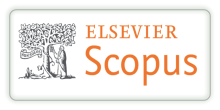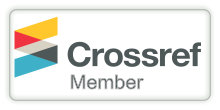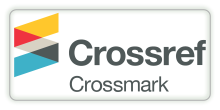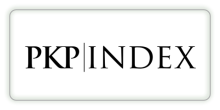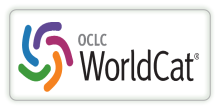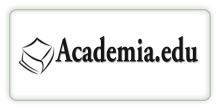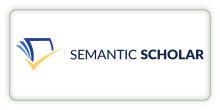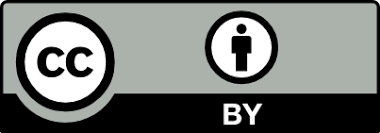CRITICAL LITERACY THROUGH GRAPHIC NOVELS: A CASE FOR INDIAN LIBRARIES FOR SUSTAINABLE PEDAGOGY
DOI:
https://doi.org/10.29121/shodhkosh.v6.i1.2025.3595Keywords:
Critical Literacy, Graphic Novels, Indian Libraries, Social Justice, Ciardiello’s Instructional ModelAbstract [English]
The paper examines the role of graphic novels in fostering critical literacy, underscoring libraries as a space to promote this skill. It highlights how the visual-verbal medium of graphic novels inculcates critical and creative thinking and comprehension. The paper advocates for the inclusion of graphic novels in Indian libraries, contributing to education and sociocultural development. The paper begins with a fundamental reading to define critical literacy and graphic novels, followed by close reading and visual-verbal analysis of select Indian graphic novels to demonstrate their capacity to foster critical literacy. The paper employs Ciardiello’s (2004) critical inquiry practices as the theoretical framework.
References
Baetens, J. & Frey, H. (2018). The Graphic Novel. In Eric Bulson (Eds.). The Cambridge Companion to the Novel. Cambridge (pp. 238–253). DOI: https://doi.org/10.1017/9781316659694.015
Barter-Storm, B. & Wik, T. (2020). Using social justice graphic novels in the ELL classroom. TESOL Journal, 1–11. doi: 10.1002/tesj.551. DOI: https://doi.org/10.1002/tesj.551
Behrman, E. H. (2006). Teaching about Language, Power, and Text: A Review of Classroom Practices that Support Critical Literacy. Journal of Adolescent & Adult Literacy, 49(6), 490-498. www.jstor.org/stable/40017606. DOI: https://doi.org/10.1598/JAAL.49.6.4
Chun, C. W. (2009). Critical Literacies and Graphic Novels for English-Language Learners: Teaching Maus. Journal of Adolescent & Adult Literacy, 53(2), 144–153. doi:10.1598/JAAL.53.2.5. DOI: https://doi.org/10.1598/JAAL.53.2.5
Ciardiello, A. V. (2004). Democracy’s Young Heroes: An Instructional Model of Critical Literacy Practices. The Reading Teacher, 58(2), 138-147. www.jstor.org/stable/20205459. DOI: https://doi.org/10.1598/RT.58.2.2
Comber, B. (2015). Critical Literacy and Social Justice. Journal of Adolescent & Adult Literacy, 58(5), 362–367. www.jstor.org/stable/44009159. DOI: https://doi.org/10.1002/jaal.370
Comber, B. (2015). Critical Literacy and Social Justice. Journal of Adolescent & Adult Literacy, 58(5), 362–367. www.jstor.org/stable/44009159. DOI: https://doi.org/10.1002/jaal.370
Downey, E. M. (2009). Graphic Novels in Curriculum and Instruction Collections. Reference & User Services Quarterly, 49(2), 181–188. www.jstor.org/stabel/20865219. DOI: https://doi.org/10.5860/rusq.49n2.181
Giroux, H. A. (2010). Rethinking Education as the Practice of Freedom: Paulo Freire and the Promise of Critical Pedagogy. Policy Futures in Education, 8(6), 715-721. doi: 10.2304/pfie.2010.8.6.715 DOI: https://doi.org/10.2304/pfie.2010.8.6.715
Heaney, M. J. (2007). Graphic novels: A sure bet for your library. In Collection Building (Vol. 26, Issue 3, pp. 72–76). doi: 10.1108/01604950710761625 DOI: https://doi.org/10.1108/01604950710761625
Labadie et al. (2012). Opening Spaces for Critical Literacy: Introducing Books to Young Readers. The Reading Teacher, 66(2), 117–127. doi: 10.1002/TRTR01097. DOI: https://doi.org/10.1002/TRTR.01097
Luke, A. (2012). Critical Literacy: Foundational Notes. Theory Into Practice, 51(1), 4–11. doi: 10.1080/00405841.2012.636324. DOI: https://doi.org/10.1080/00405841.2012.636324
Marshall, E. (2016). Counter-Storytelling through Graphic Life Writing. Language Arts, 94(2), 79–93. www.jstor.org/stable/44809884. DOI: https://doi.org/10.58680/la201628800
McCloud, S. (1994). Understanding Comics: The Invisible Art. Harper Collins Press.
Moeller, R. A. (2016). A Question of Legitimacy: Graphic Novel Reading as “Real” Reading. Journal of Adolescent & Adult Literacy. 59(6), 709–717. www.jstor.org/stable/44011333. DOI: https://doi.org/10.1002/jaal.501
Nayar, P. K. (2016). The Indian Graphic Novel: Nation, History and Critique. Routledge. DOI: https://doi.org/10.4324/9781315659435
Payal, A.P., & Sengupta, R. (2020). This Side, That Side: Restoring Memory, Restorying Partition. In: Davies, D., Rifkind, C. (Eds). Documenting Trauma in Comics. Palgrave Studies in Comics and Graphic Novels. Palgrave Macmillan. https://doi.org/10.1007/978-3-030-37998-8_8 DOI: https://doi.org/10.1007/978-3-030-37998-8_8
Rohila, B. (2021). Visual voices: Mapping Indian women’s contribution to graphic narratives. Indian Literature, 65(6 (326)), 15–23. https://www.jstor.org/stable/27277121
Saraceni, M. (2003). The Language of Comics. Routledge.
Soares, L. B and Wood, W. (2010). A Critical Literacy Perspective for Teaching and Learning Social Studies. The Reading Teacher, 63(6), 486-494. www.jstor.org/stable/25615838. DOI: https://doi.org/10.1598/RT.63.6.5
Tabachnick, S. E. (2017). From Comics to the Graphic Novel: William Hogarth to Will Eisner. In Stephen E. Tabachnick (Eds.) The Cambridge Companion to the Graphic Novel. Cambridge. (pp. 26–40). https://doi.org/10.1017/9781316258316.004. DOI: https://doi.org/10.1017/9781316258316.004
Thomas, P.L, et al. (2015). Speaking Truth to Power: Caring Critical Literacy: The Most Radical Pedagogy You Can Offer Your Students. The English Journal, 105(2), 129-132. www.jstor.org/stable/26359371. DOI: https://doi.org/10.58680/ej201527596
Vasileva, P. & Golubev, V. (2019). Eco-Comics as an Educational Tool for Teaching Environmental Journalism and ESP. The Journal of Teaching English for Specific and Academic Purposes, 7(4), 431-442. doi: 10.22190/JTESAP1904431V. DOI: https://doi.org/10.22190/JTESAP1904431V
William, V. K & Peterson, D. V. (2009). Graphic Novels in Libraries Supporting Teacher Education and Librarianship Programs. Library Resources & Technical Services, 53(3), 166-173. doi: 10.5860/Irts.53n3.166 DOI: https://doi.org/10.5860/lrts.53n3.166
Downloads
Published
How to Cite
Issue
Section
License
Copyright (c) 2025 Dr. M. Angkayarkan Vinayakaselvi, R. Abinaya

This work is licensed under a Creative Commons Attribution 4.0 International License.
With the licence CC-BY, authors retain the copyright, allowing anyone to download, reuse, re-print, modify, distribute, and/or copy their contribution. The work must be properly attributed to its author.
It is not necessary to ask for further permission from the author or journal board.
This journal provides immediate open access to its content on the principle that making research freely available to the public supports a greater global exchange of knowledge.





